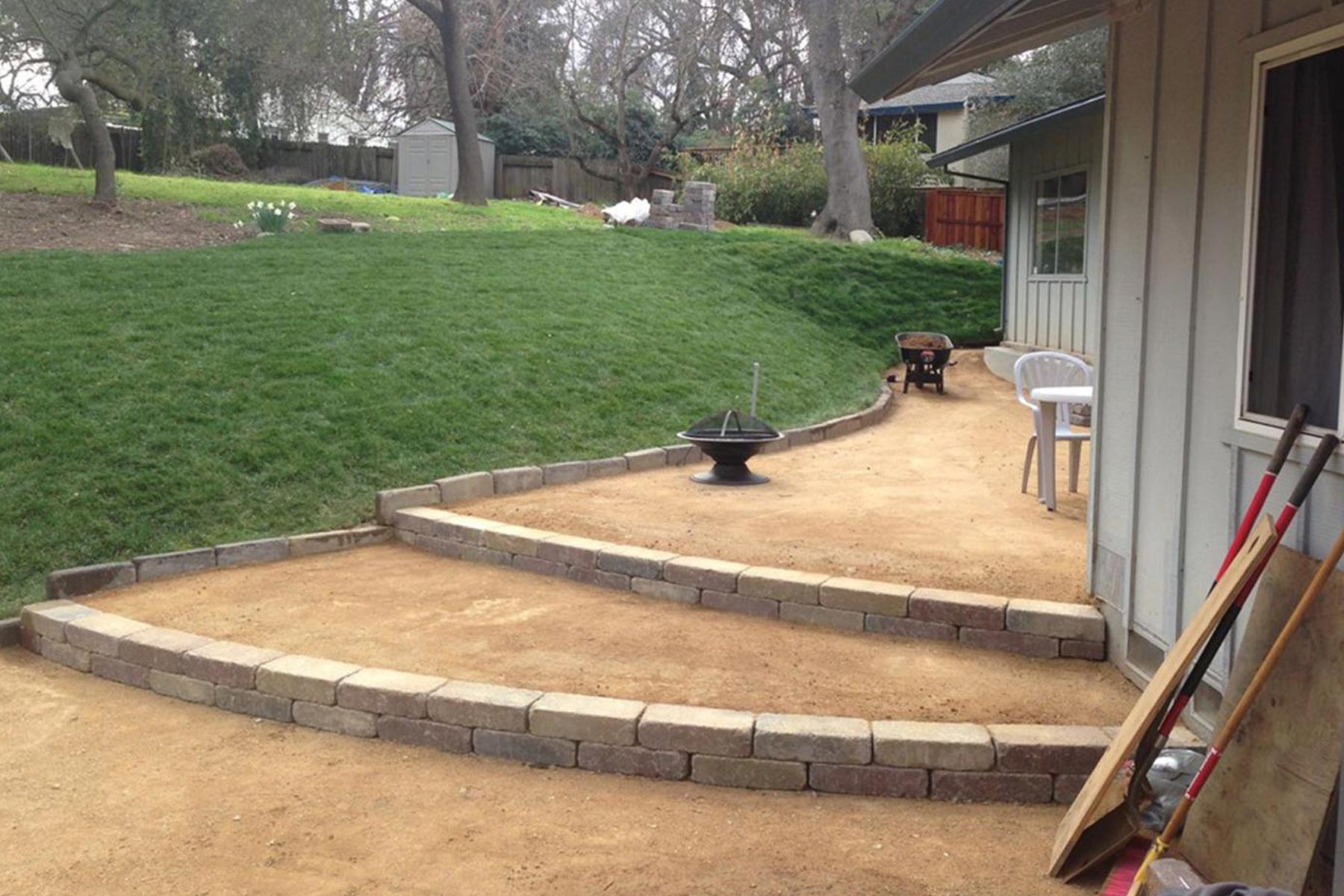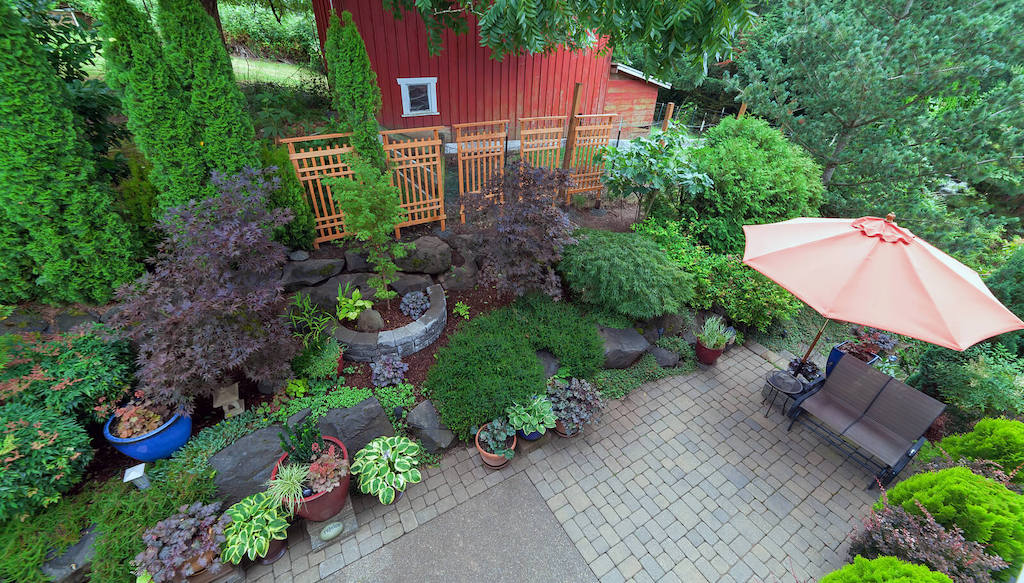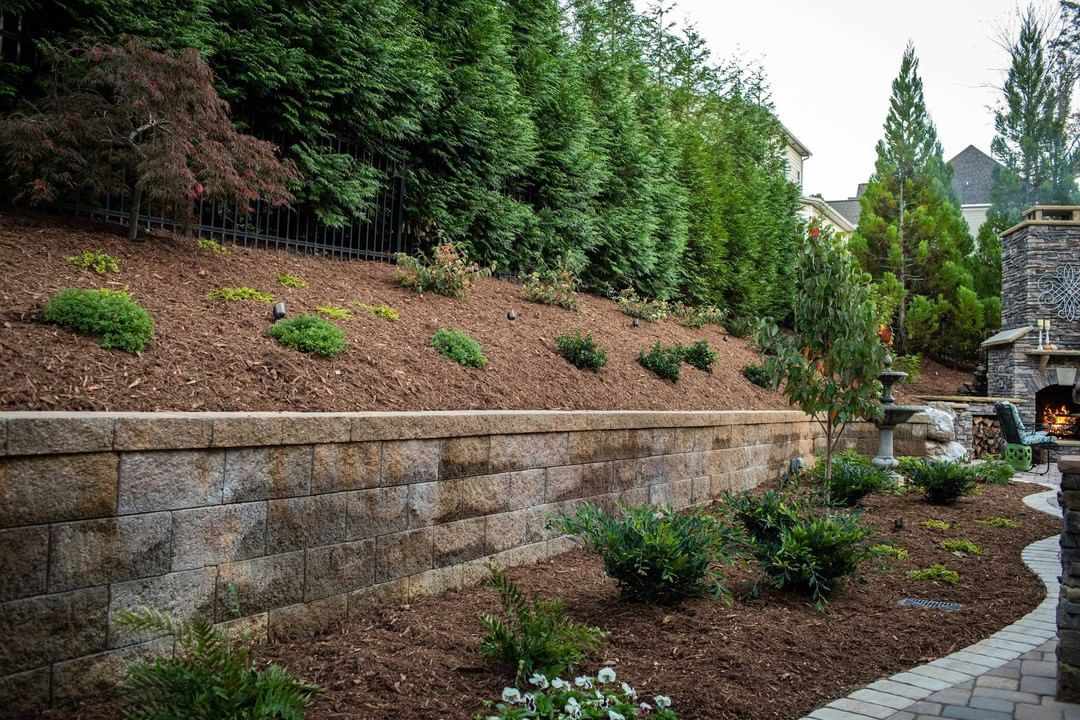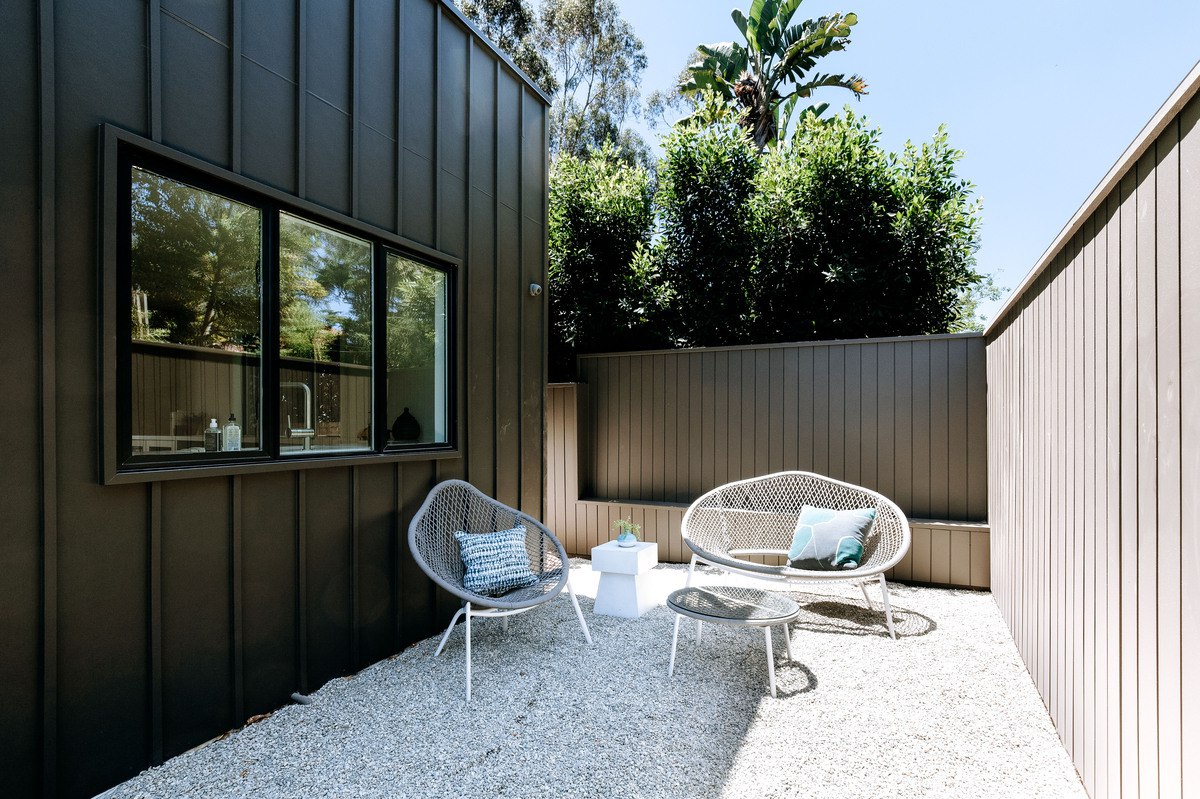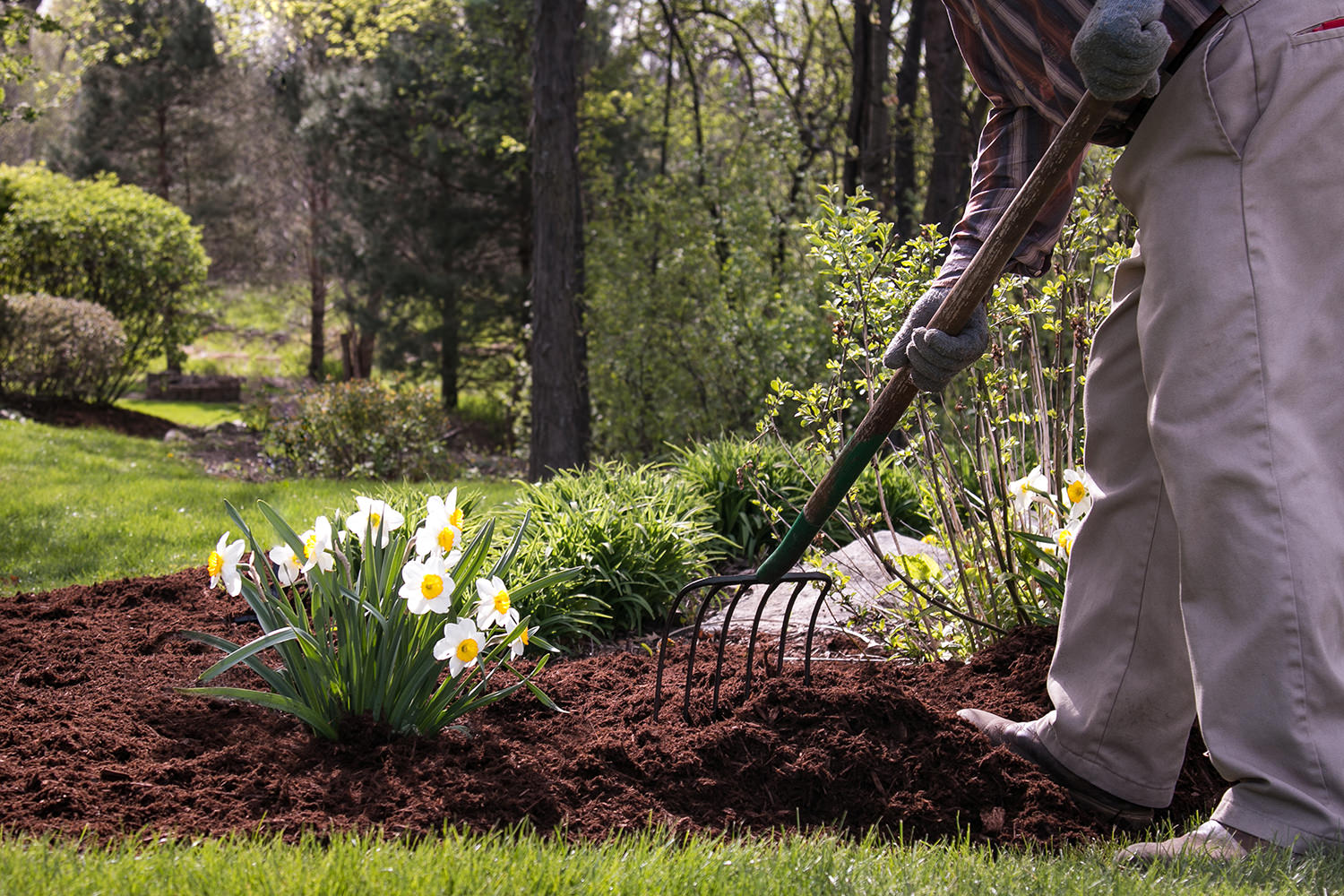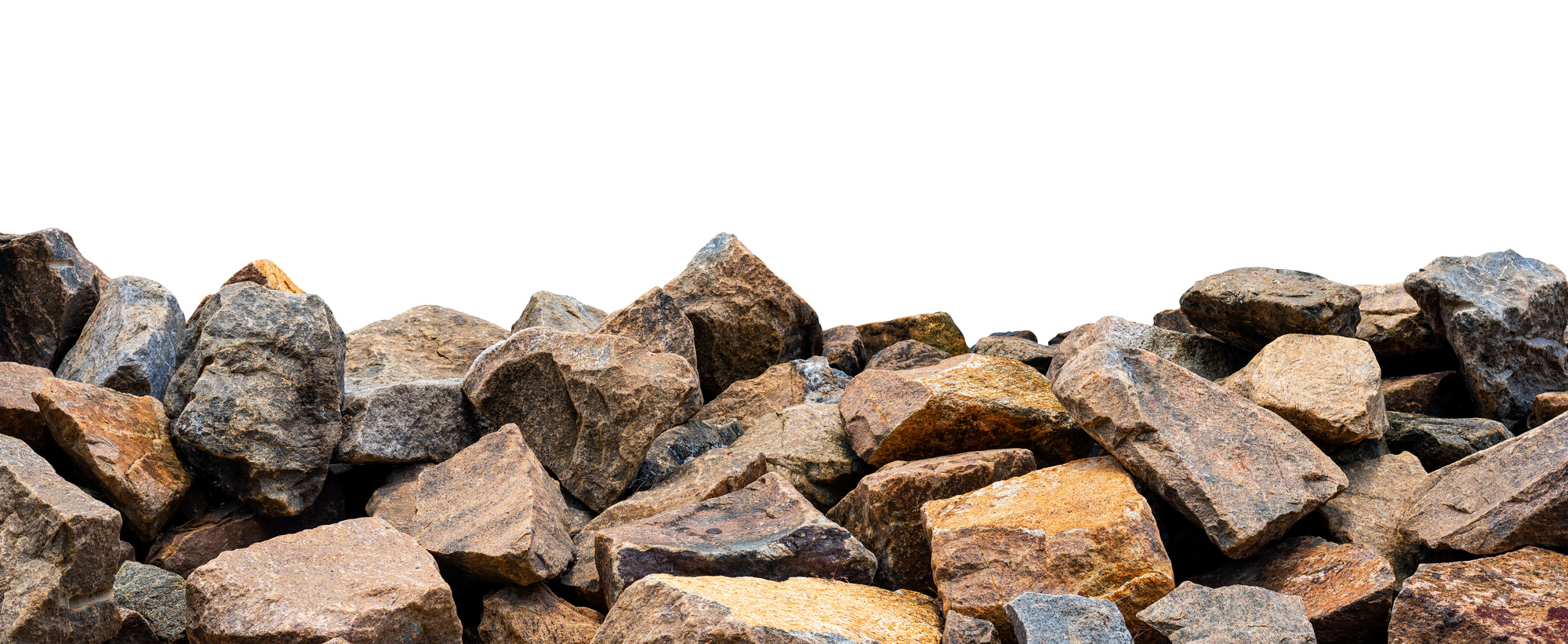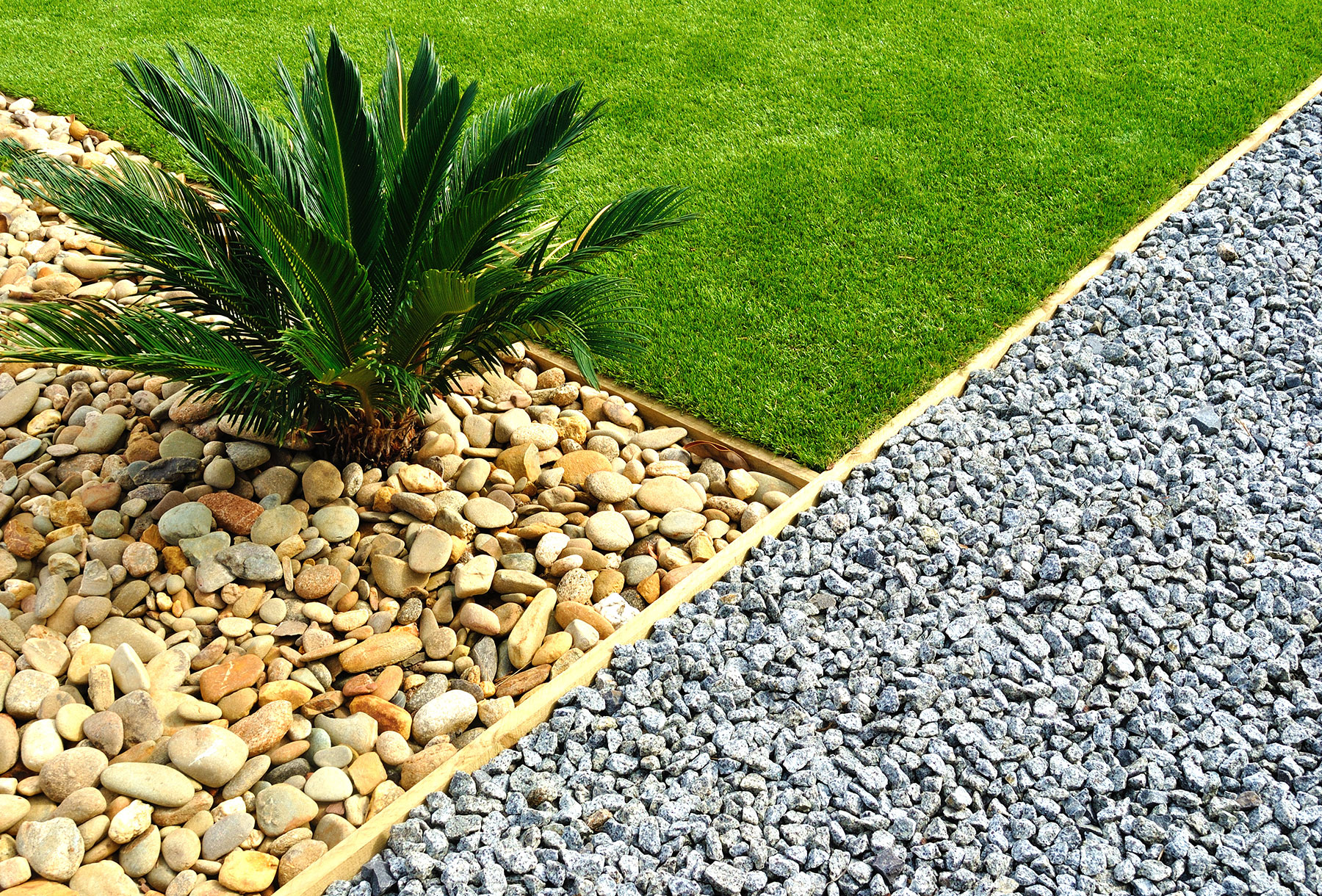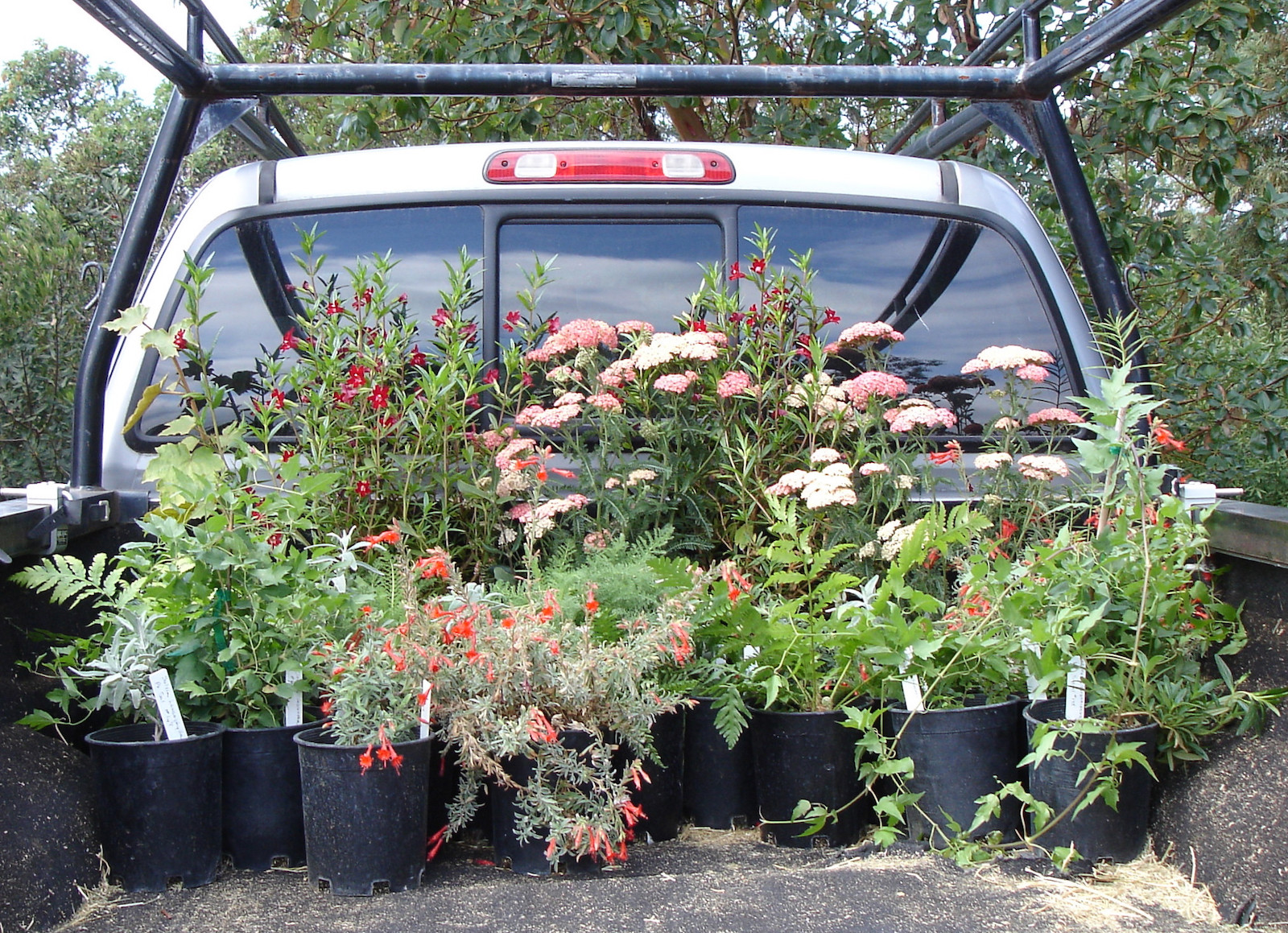Home>Garden Design>Landscape Design>What Is A Swell In Landscaping
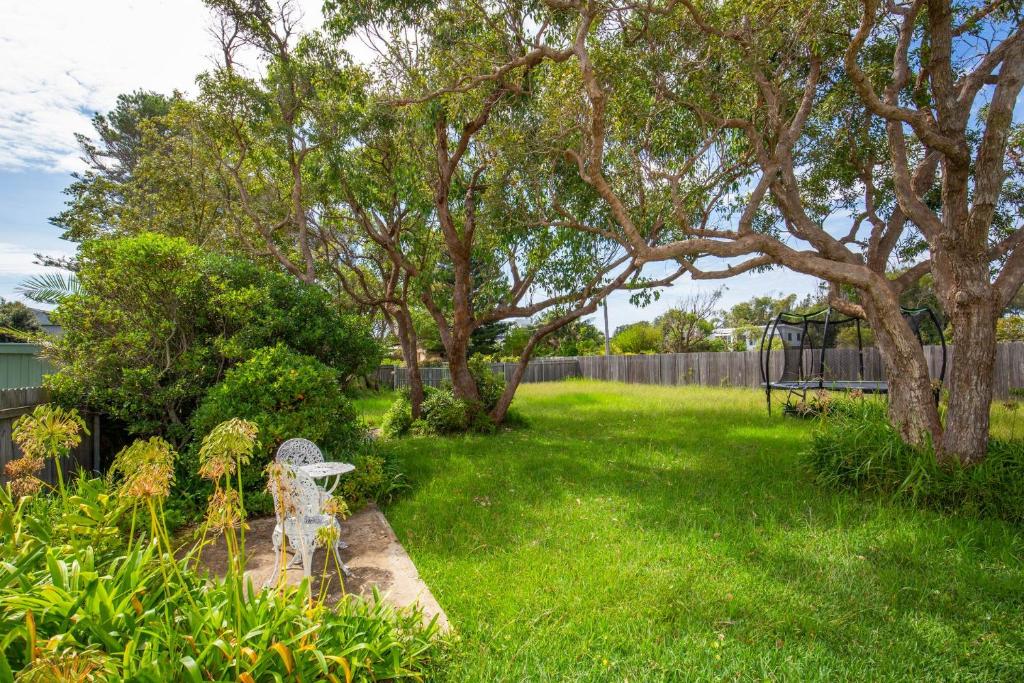

Landscape Design
What Is A Swell In Landscaping
Modified: January 22, 2024
Discover the concept of a swell in landscaping and its importance in landscape design. Enhance the visual appeal and functionality of your outdoor space with this versatile landscaping feature.
(Many of the links in this article redirect to a specific reviewed product. Your purchase of these products through affiliate links helps to generate commission for Chicagolandgardening.com, at no extra cost. Learn more)
Table of Contents
Introduction
Welcome to the world of landscaping design, where creativity meets nature. If you’re looking to transform your outdoor space into a stunning and inviting oasis, then understanding the basics of landscaping is essential. One crucial element of landscaping design is the use of swells. These natural-looking, curved features not only add visual interest but also serve practical purposes.
A swell, in landscaping terms, refers to a raised area of land that mimics the natural undulations found in the natural environment. By carefully designing and incorporating swells into your landscape, you can create a visually appealing terrain that adds depth and dimension to your outdoor space. Swells can be used in a variety of settings, from residential gardens to public parks, and can be tailored to suit any style or theme.
So, why are swells such an integral part of landscaping design? Well, the benefits they offer are numerous. Firstly, swells help with soil erosion control by redirecting water flow and preventing runoff. They also assist in water conservation by promoting absorption and filtration. Additionally, swells add a dynamic element to your landscape, drawing the eye and creating focal points within the overall design. They can be used to delineate different areas of your outdoor space or create pathways and borders.
Whether you’re a seasoned landscape designer or a homeowner looking to spruce up your garden, understanding the different types of swells and how to incorporate them into your overall design is crucial. From gentle, meandering swells that mimic the flow of a river to more dramatic and pronounced swells that create a sense of movement and energy, the possibilities are endless.
In this article, we’ll explore the various types of swells, discuss how to design and build them, and highlight common maintenance practices. We’ll also cover some common mistakes to avoid, ensuring that your landscaping project is a success. So grab a cup of your favorite beverage, sit back, and let’s dive into the world of landscaping swells!
Definition of a Swell in Landscaping
A swell, in the realm of landscaping, refers to a raised area of land that mimics the natural undulations and curves found in the surrounding environment. Also known as berms or mounds, swells are versatile design elements that can be incorporated into various types of landscapes to add visual interest and functionality.
When designing a swell, careful consideration is given to its size, shape, and placement within the landscape. Swells can range in size from subtle, gentle slopes to more pronounced and dramatic mounds. The shape of the swell may mimic that of a flowing river or emulate the curves and contours of rolling hills. The placement of swells within a landscape design is key, as they can help create natural boundaries or direct the flow of foot traffic.
One of the primary functions of swells is to assist with water management. By strategically positioning swells, water runoff can be redirected and controlled, preventing erosion and promoting proper drainage. Swells are designed to slow down the movement of water, allowing it to infiltrate the soil gradually and preventing it from pooling or causing damage.
In addition to their practical benefits, swells also offer aesthetic appeal. By adding gentle slopes and undulating mounds to a landscape, a sense of depth and dimension is created. Swells can serve as focal points, drawing the eye and providing visual interest. They can also be used to define different areas within a landscape, such as separating a flower garden from a lawn or creating a natural-looking border.
Swells can be constructed using a variety of materials, depending on the desired look and functionality. Soil, rocks, gravel, and even landscaping fabric or geotextiles can be used to shape and reinforce the swell. The choice of material will depend on factors such as the intended purpose, overall design vision, and budget.
Whether you’re looking to add a touch of elegance to your backyard or create a dynamic landscape for a public park, incorporating swells into your design can transform a flat, uninspired space into a visually captivating and functional environment. When used thoughtfully and in harmony with the surrounding landscape, swells can make a significant impact on the overall aesthetics and functionality of a landscaping project.
Benefits of Using Swells in Landscaping
Swells are not just decorative features in landscaping; they offer a range of benefits that make them a valuable addition to any outdoor space. Here are some of the key advantages of incorporating swells into your landscaping design:
- Erosion Control: One of the primary benefits of using swells in landscaping is their ability to control soil erosion. By diverting water flow and preventing runoff, swells help retain soil in place. The curves and slopes of swells slow down the movement of water, allowing it to infiltrate the soil gradually, reducing the risk of erosion and preventing damage to plants and trees.
- Water Conservation: Swells play an important role in water conservation by promoting efficient water absorption and filtration. As water flows through the swells, it has more time to soak into the soil, ensuring that plants and trees receive the necessary moisture for healthy growth. This not only helps conserve water resources but also reduces the need for additional watering in the landscape.
- Aesthetic Appeal: Swells add visual interest and enhance the overall beauty of a landscape. Their gentle slopes, curves, and mounds create a sense of depth and dimension, adding texture to an otherwise flat terrain. Swells can be landscaped with various plants, shrubs, and flowers, further enhancing their visual appeal and blending them seamlessly into the surrounding environment.
- Focal Points and Boundaries: Swells can serve as focal points in a landscape, drawing attention and creating a sense of visual intrigue. They can be strategically placed to direct the eye towards specific elements, such as a beautiful flower garden or a stunning view. Swells can also act as natural boundaries, separating different areas of the landscape, defining pathways, or providing a visual buffer from neighboring properties.
- Creative Design Opportunities: The versatility of swells allows for creative freedom in landscaping design. They can be used to create unique and dynamic landforms, such as replicating rolling hills or mimicking the meandering flow of a river. Swells can be combined with other landscaping features, such as ponds or rock formations, to create a cohesive and harmonious outdoor space that reflects your personal style and preferences.
By harnessing the practical and aesthetic benefits of swells, you can transform your outdoor space into a captivating and functional landscape that is both visually appealing and environmentally conscious. The next section will explore the different types of swells commonly used in landscaping and the considerations involved in their design and construction.
Types of Swells in Landscaping
Swells come in various types, each offering unique characteristics and design possibilities. Here are some of the most common types of swells used in landscaping:
- Meandering Swells: Meandering swells follow a curved, winding path, mimicking the natural flow of a river or stream. These swells create a sense of movement and add a dynamic element to the landscape. They can be used to guide the eye through the outdoor space, leading to focal points or creating a serene and calming atmosphere.
- Gentle Sloping Swells: Gentle sloping swells are characterized by subtle and gradual inclines. They are often used to add slight elevation to a flat terrain, creating visual interest and variation. These swells are commonly employed in residential gardens and can be landscaped with plants, flowers, or even small trees to enhance their aesthetic appeal.
- Mound Swells: Mound swells are more pronounced and dramatic in their shape and elevation. They can be used to create focal points or provide a commanding presence in a landscape design. Mound swells are often used to showcase a centerpiece, such as a statue or a large tree, and can be beautifully landscaped with flowers, shrubs, or ornamental grasses to create a visually striking display.
- Terraced Swells: Terraced swells involve the creation of multiple levels or tiers of swells. This type of swell is commonly used in sloped landscapes to create flat areas for gardening or seating. Terraced swells can be visually appealing, offering opportunities for growing plants on each level, and can also provide a practical solution for utilizing uneven spaces effectively.
- Retention Swells: Retention swells serve a specific purpose in managing water runoff and preventing erosion. They are designed to hold and slowly release water, allowing it to infiltrate the soil and prevent flooding or erosion issues. Retention swells are often incorporated into areas prone to heavy rainfall or where water flow needs to be controlled effectively.
It’s important to consider the overall design and functionality when selecting the type of swell to incorporate into your landscaping project. Each type of swell has its own unique characteristics and can be tailored to suit your specific needs and preferences. Experimenting with different swell types can help you create a landscape that is visually captivating, practical, and harmonious with the surrounding environment.
Designing and Building Swells in Landscaping
The process of designing and building swells in landscaping requires careful planning and attention to detail. Here are some key considerations to keep in mind:
- Site Analysis: Before designing your swells, conduct a thorough analysis of the site. Consider factors such as the existing topography, soil type, drainage patterns, and any potential obstacles or utilities that may affect the placement and construction of the swells. Understanding these factors will help you design swells that integrate seamlessly with the site and enhance its overall functionality.
- Function and Purpose: Determine the function and purpose of the swells in your landscape design. Are they primarily decorative, or do they serve specific practical purposes such as water management or erosion control? Clarifying the goals of your swells will help guide the design process and ensure that they are constructed with the intended functionality in mind.
- Shape and Size: Consider the desired shape and size of your swells based on your overall design vision. Curved and meandering swells can add a sense of movement and flow, while more pronounced mounds can create visual interest and focal points. The size of the swells should be in proportion to the surrounding landscape, ensuring a harmonious and balanced aesthetic.
- Materials: Select the appropriate materials to construct your swells. The choice of materials will depend on factors such as the desired appearance, budget, and maintenance requirements. Popular options include soil, rocks, gravel, and landscaping fabric or geotextiles for added stability. Consult with a landscaping professional to determine the best materials for your specific project.
- Planting and Landscaping: Incorporate plants, shrubs, and groundcovers to enhance the visual appeal of your swells. Select plant species that are well-suited to the local climate and soil conditions. Consider using a variety of plant types to create texture, color, and seasonal interest. Proper planting and landscaping techniques will help integrate the swells seamlessly into the overall landscape design.
- Construction Techniques: Depending on the complexity of your design, it may be necessary to consult with a professional landscaper or contractor for assistance with constructing the swells. Proper construction techniques, including grading, compaction, and soil stabilization, are essential to ensure the durability and longevity of the swells.
Remember that designing and building swells in landscaping is not a one-size-fits-all approach. It requires a customized approach that takes into account the unique characteristics of your site, your design goals, and the desired functionality. Collaborating with a knowledgeable landscaping professional can help bring your vision to life and ensure that your swells are expertly designed and constructed.
Maintenance of Swells in Landscaping
Once your swells are designed and constructed, regular maintenance is crucial to keep them looking their best and functioning effectively. Here are some essential maintenance practices to consider:
- Weed Control: Regularly inspect your swells for weeds and remove them promptly to prevent competition for nutrients and water. Apply a layer of mulch around the plants in your swells to help suppress weed growth and retain moisture.
- Watering: Depending on the planting scheme and the needs of the plants in your swells, ensure they receive sufficient water. Monitor rainfall levels and adjust irrigation as needed to maintain optimal moisture levels. Water deeply and infrequently to encourage deep root growth and prevent shallow rooting.
- Pruning and Trimming: Prune and trim plants in your swells as necessary to maintain their shape, remove dead or damaged branches, and encourage healthy growth. Regular pruning promotes air circulation and prevents overcrowding, reducing the risk of diseases and pests.
- Fertilization: The plants in your swells may benefit from periodic fertilization to ensure healthy growth and vibrant foliage. Consult with a local garden center or landscaping professional to determine the appropriate type and schedule for fertilization based on the specific needs of your plants.
- Soil Amendments: Periodically assess the soil quality in your swells and consider amending it with organic matter or soil conditioners to improve its fertility, structure, and drainage. Conduct soil tests to identify any nutrient deficiencies or pH imbalances, and adjust accordingly.
- Mulching: Refresh the mulch layer around your plants at least once a year to help conserve moisture, suppress weeds, and regulate soil temperature. Maintain a layer of approximately 2-3 inches of mulch, ensuring it is spread evenly and kept away from plant stems.
- Inspect for Drainage Issues: Regularly check the drainage patterns in and around your swells to ensure that water is flowing and draining properly. Address any issues promptly to prevent water from pooling or causing erosion.
- Seasonal Clean-up: Conduct seasonal clean-ups to remove debris, fallen leaves, and other organic matter from your swells. This will help maintain a clean and visually appealing landscape while reducing the risk of diseases and pests.
- Monitor and Manage Pests and Diseases: Keep a watchful eye on your swells for any signs of pests or diseases. Identify and address issues early on to prevent the spread and minimize potential damage. Consult with a local extension office or a professional landscaper if you need assistance in identifying and treating specific pests or diseases.
By implementing a regular maintenance routine and addressing any issues promptly, you can ensure that your swells remain healthy, attractive, and functional year-round. Regular care and attention will help your swells thrive and contribute to the overall beauty and functionality of your landscape for years to come.
Common Mistakes to Avoid when Creating Swells in Landscaping
While designing and constructing swells in landscaping can be an exciting process, there are common mistakes that should be avoided to ensure the success of your project. Here are some key mistakes to be mindful of:
- Poor Planning: Failing to adequately plan your swells can lead to undesirable outcomes. Take the time to thoroughly analyze your site, consider the purpose and functionality of the swells, and develop a well-thought-out design that aligns with your vision. Without proper planning, you may end up with swells that are impractical or do not integrate well with the overall landscape design.
- Inadequate Drainage: Proper drainage is essential for the health and longevity of your swells. Failing to account for proper drainage can result in water pooling, erosion, and damage to the plants within the swells. Ensure that swells are adequately graded and incorporate features such as drainage pipes or channels to direct water flow away from vulnerable areas.
- Excessive Height or Size: It’s important to consider the scale and proportion of your swells in relation to the surrounding landscape. Avoid creating swells that are too tall or too large, as they can appear unnatural and overpowering. Maintaining a balance and harmony with the overall design will contribute to a more visually pleasing and cohesive landscape.
- Improper Soil Preparation: Failing to adequately prepare the soil within your swells can result in poor plant growth and health. Ensure that the soil is properly amended and prepared with organic matter or soil conditioners to provide a fertile and well-draining environment for plant roots. Conduct soil tests to determine the pH and nutrient levels and make any necessary adjustments before planting.
- Plant Selection and Placement: Choosing the wrong plants for your swells or placing them in inappropriate locations can lead to issues. Consider factors such as sunlight exposure, moisture requirements, and plant size when selecting and placing plants within your swells. Research and consult with experts to ensure that the chosen plants are well-suited to the specific conditions of your swells.
- Lack of Maintenance: Neglecting regular maintenance can quickly diminish the beauty and functionality of your swells. Avoid the mistake of failing to weed, water, prune, and provide necessary care for the plants within your swells. A consistent maintenance routine will help keep your swells healthy, attractive, and thriving.
- Ignoring Local Regulations: Before starting any landscaping project, familiarize yourself with local regulations and restrictions. Some areas have specific guidelines regarding the construction and design of swells. Failure to comply with these regulations may result in fines or the need to modify or remove your swells.
By being mindful of these common mistakes, you can avoid potential pitfalls and ensure that your swells enhance the beauty, function, and longevity of your landscape design. Taking the time to plan properly, make informed decisions, and provide ongoing care will result in swells that transform your outdoor space into a stunning and inviting haven.
Conclusion
Swells are a versatile and beneficial feature in landscape design. They not only add visual interest and dimension to outdoor spaces but also serve practical purposes such as erosion control and water conservation. By carefully designing and constructing swells, you can create a captivating and functional landscape that integrates seamlessly with the natural environment.
In this article, we explored the definition of swells in landscaping and discussed the numerous benefits they offer. We discovered the different types of swells, including meandering swells, gentle sloping swells, mound swells, terraced swells, and retention swells, each with its own unique characteristics and design possibilities. We also delved into the importance of proper planning, material selection, and maintenance practices to ensure the success of your swells.
However, it’s crucial to avoid common mistakes such as poor planning, inadequate drainage, excessive size or height, improper soil preparation, improper plant selection and placement, lack of maintenance, and ignoring local regulations. By being mindful of these mistakes, you can ensure that your swells have a positive impact on your landscape design and contribute to the long-term health and beauty of your outdoor space.
Whether you’re a homeowner looking to enhance your backyard or a landscape designer working to create stunning outdoor environments, incorporating swells into your landscaping can elevate the aesthetics and functionality of the space. Using swells effectively can transform a flat and uninspired area into a visually captivating and environmentally conscious landscape.
So, go ahead and embrace the benefits of swells in your landscaping projects. Let your creativity flow and design swells that not only enhance the beauty of your outdoor space but also contribute to the overall health and sustainability of your landscape. With proper planning, construction, and maintenance, your swells will become an integral and cherished part of your outdoor oasis for years to come.
